|
|
A Folha da Frontera
James Hayes-Bohanan,
Ph.D. |
|
|
A Folha da Frontera
James Hayes-Bohanan,
Ph.D. |


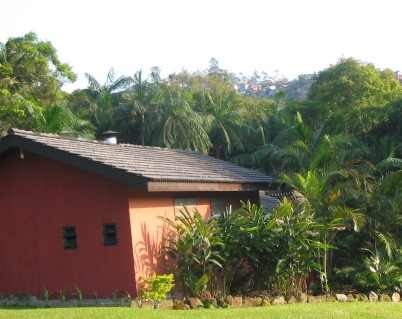 INSET: 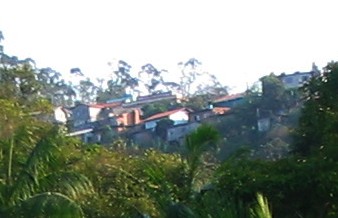 |
This could be considered just
another gratuitous photo of my beautiful little (and did I mention
inexpensive) hotel, except that in the background can be seen a small favela
- the informal squatter settlements for which Latin American cities -
especially those in Brazil - are famous. One goal of my trip is to help
students learn about the challenges of urban planning in this sort of
dynamic and contrasting environment. One morning I spied quite a large moth at the bird feeder, feeding on some leftover fruits. |
|
|
|
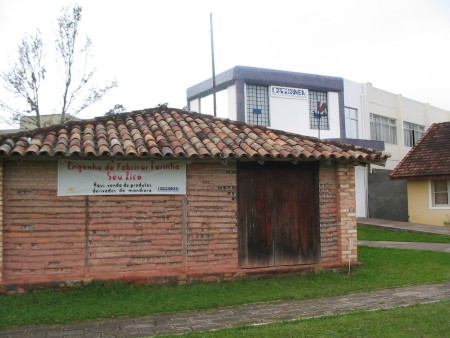 The Azorian center has built this model of a manioc-processing operation right in the middle of campus. |
 Recycling programs are increasingly important at Brazilian universities, and even in the large cities, better attention is being paid to trash removal than was the case even a few years ago. |
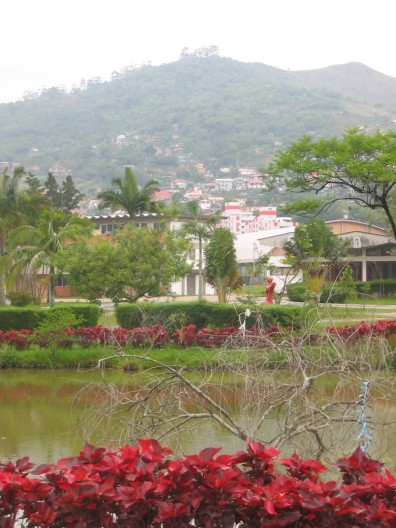 The campus is lovely, with interesting artworks throughout, and a nicely landscaped pond in the center. The immediate neighborhood is full of nice apartments, but the surrounding hills feature favelas (squatter settlements). Even in this prosperous corner of Brazil, irregular housing is a real challenge for urban planners. |
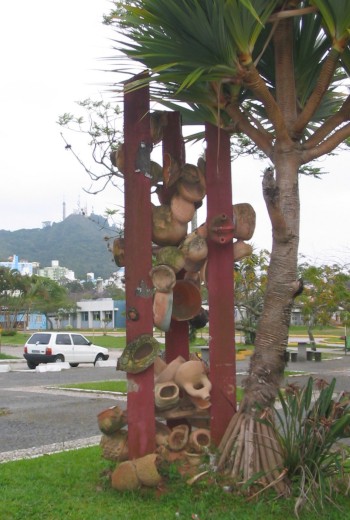 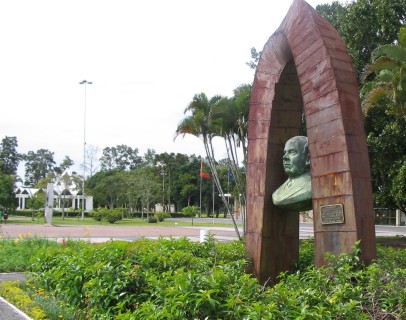 |
 |
 This is a "real" college town, complete with graffiti on campus and at least one tattoo and piercing shop! Note that the graffiti includes a poem by Pablo Neruda. |
I enjoyed presenting my paper and meeting a lot of geographers at the COBRAC conference.  |
 |
Whenever I travel abroad, I ask a local friend
to take me to a CD shop. Even though I am pretty knowledgeable about
Brazilian music, in this very chic shop (complete with capuccino) I
learned about several amazing artists that were new to me.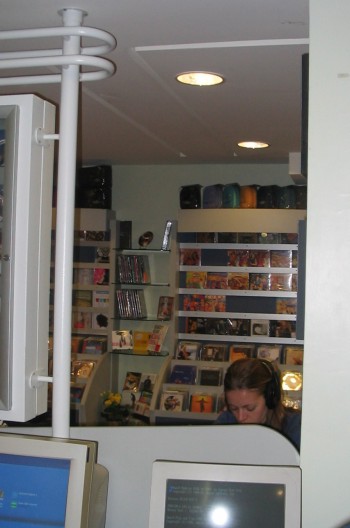 |
 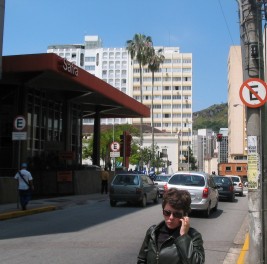 Downtown Florianópolis is a mix of small plazas,
shopping areas,
and businesses. The State University is located in several different
buildings
throughout the downtown. Downtown Florianópolis is a mix of small plazas,
shopping areas,
and businesses. The State University is located in several different
buildings
throughout the downtown. |
The city buses in
Florianópolis
are quite modern, with several sophisticated bus depots that operate
much
like airports, with terminals showing the departure times and
destinations
of each bus!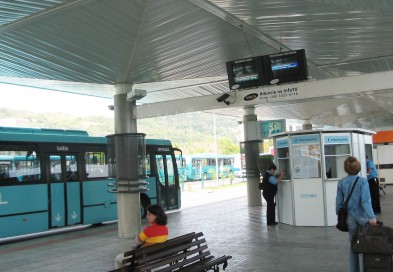 |
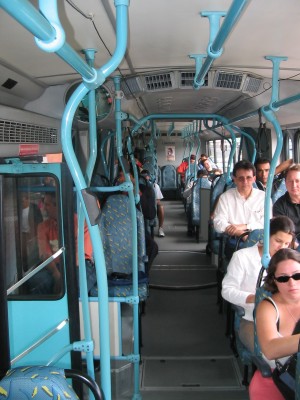 |
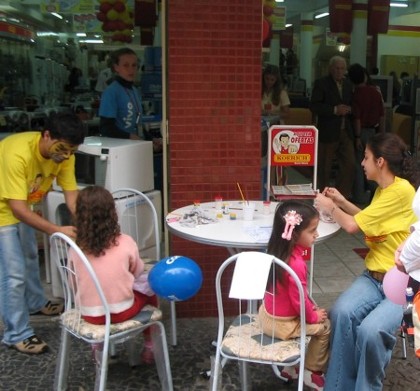 |
In the U.S., children have great rhetorical
importance,
but in Brazil they really are celebrated. I was fortunate enough to be
in
the country for the Day of the Child this time, a national holiday for
which
most businesses and offices close. Those businesses that do stay open
--
such as this appliance store -- are catering specifically to the
children
and their parents. A modest apartment complex near the Federal University features this delightful playground.  |
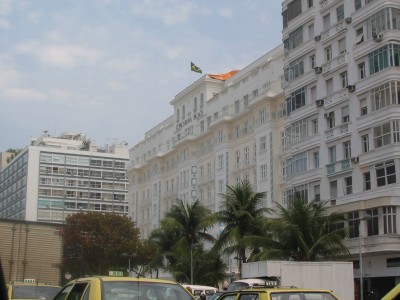 |
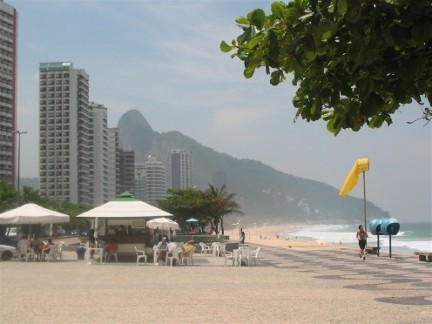 |
| Notice the very narrow alley to the left, and the rather informal state of the electrical system. In Brazil, voting in both local and national elections is mandatory, and it is highly computerized. The campaign posters in this photo are typical, featuring each candidate's name and photo, along with the five-digit number needed to vote electronically. 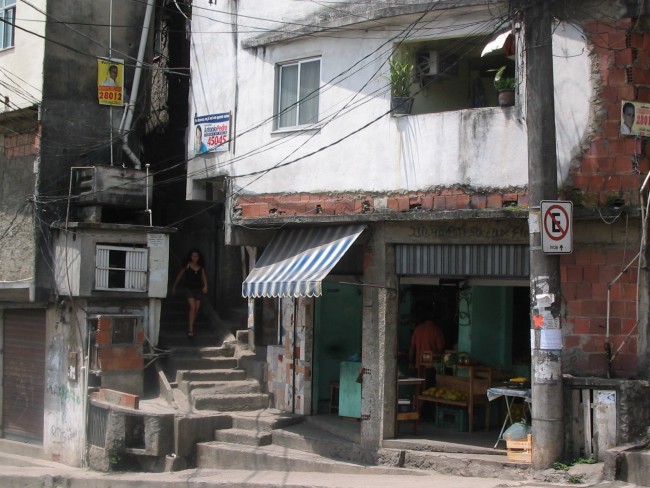 |
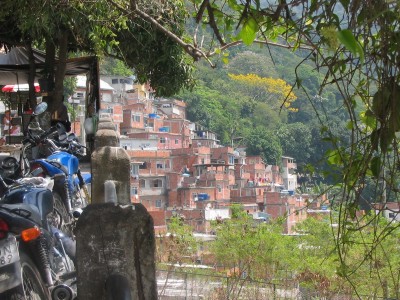 |
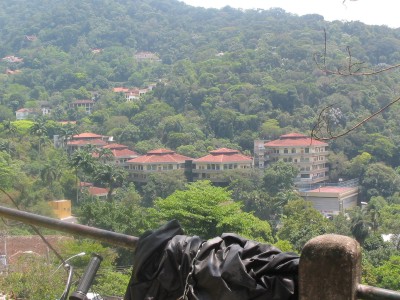 |
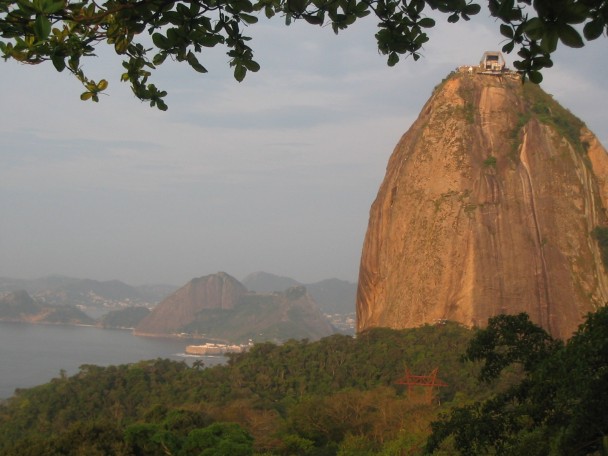

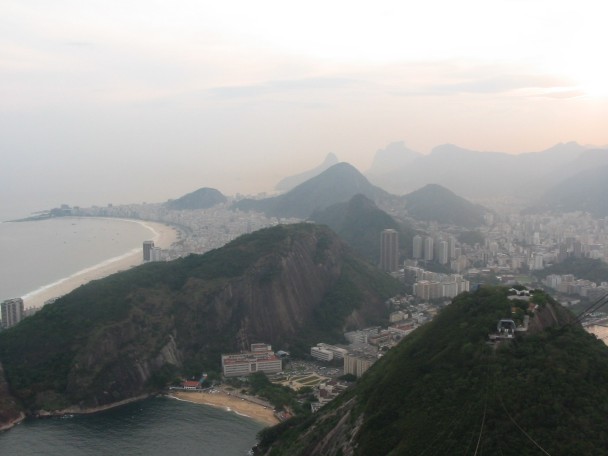
For the 1996 dissertation trip, see Folha da Frontera - Volume I, No. 1
For the 2000 family trip, see Folha da Frontera - Volume II, No. 1
For the 2003 student trip, see Folha da Frontera
- Volume III, No. 1